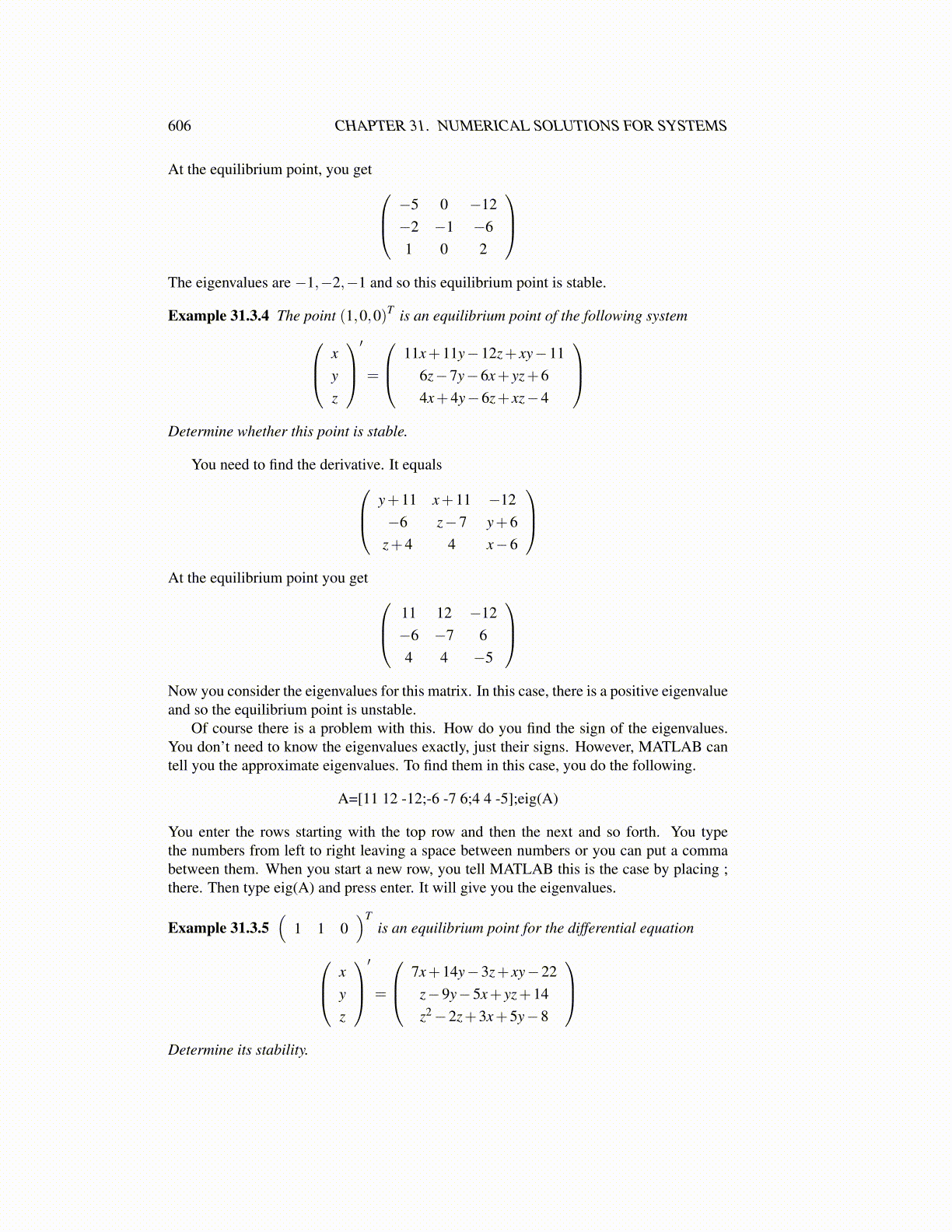
606 CHAPTER 31. NUMERICAL SOLUTIONS FOR SYSTEMS
At the equilibrium point, you get −5 0 −12−2 −1 −61 0 2
The eigenvalues are −1,−2,−1 and so this equilibrium point is stable.
Example 31.3.4 The point (1,0,0)T is an equilibrium point of the following system xyz
′
=
11x+11y−12z+ xy−116z−7y−6x+ yz+64x+4y−6z+ xz−4
Determine whether this point is stable.
You need to find the derivative. It equals y+11 x+11 −12−6 z−7 y+6
z+4 4 x−6
At the equilibrium point you get 11 12 −12
−6 −7 64 4 −5
Now you consider the eigenvalues for this matrix. In this case, there is a positive eigenvalueand so the equilibrium point is unstable.
Of course there is a problem with this. How do you find the sign of the eigenvalues.You don’t need to know the eigenvalues exactly, just their signs. However, MATLAB cantell you the approximate eigenvalues. To find them in this case, you do the following.
A=[11 12 -12;-6 -7 6;4 4 -5];eig(A)
You enter the rows starting with the top row and then the next and so forth. You typethe numbers from left to right leaving a space between numbers or you can put a commabetween them. When you start a new row, you tell MATLAB this is the case by placing ;there. Then type eig(A) and press enter. It will give you the eigenvalues.
Example 31.3.5(
1 1 0)T
is an equilibrium point for the differential equation
xyz
′
=
7x+14y−3z+ xy−22z−9y−5x+ yz+14z2−2z+3x+5y−8
Determine its stability.